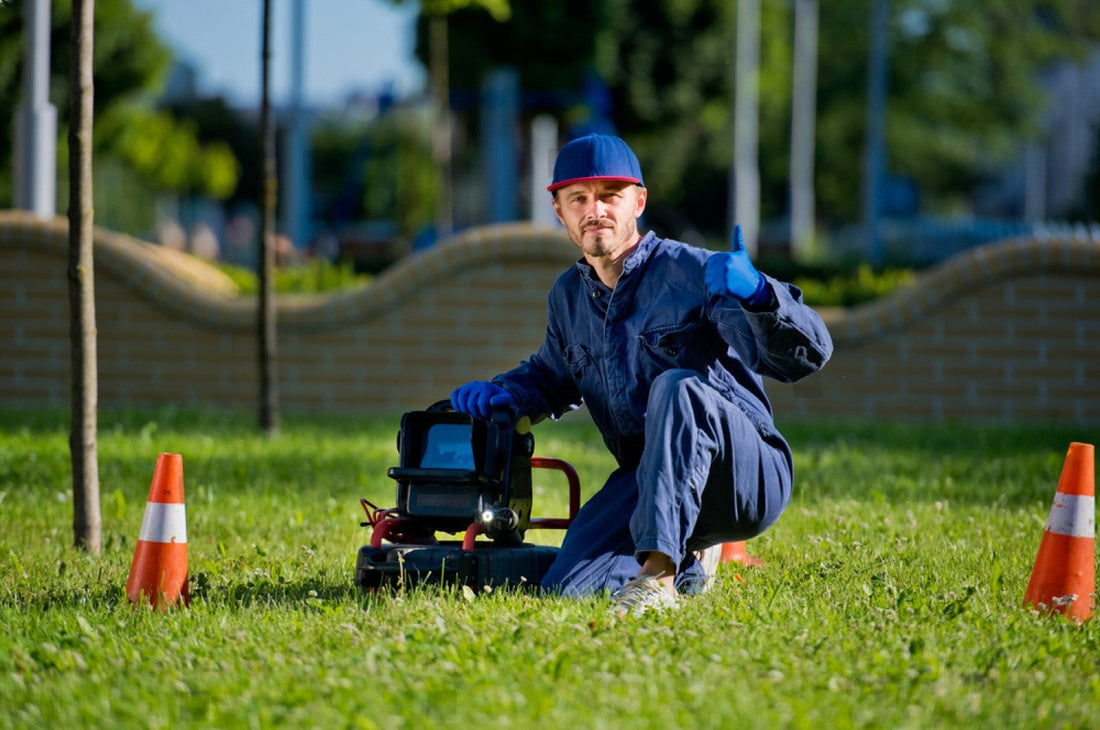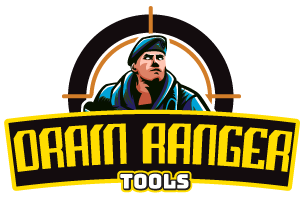
7 Reasons Professionals Are Upgrading Their Inspection Equipment in 2025
Share
The inspection equipment, such as visual inspection equipment, camping equipment, and agricultural equipment, and their effective use help determine defects as early as possible, thereby avoiding further malfunctions, challenges, accidents, expensive servicing, and breakdowns. With the passing time, plumbing professionals aim to advance the inspection equipment to achieve the best results.
But why? This blog will answer this question!
The Necessity for Upgrading Inspection Equipment
Plumbing professionals are striving to make their work easier, and modern inspection equipment helps them achieve that. How? Take a look at the following points:
1. Enhanced Accuracy and Reliability
The professional prefers to shift from preventive or reactive maintenance to a predictive approach by incorporating condition-monitoring data to anticipate any future issues, by minimizing downtime, and focusing on relevant resources.
The modern devices aim to reduce human error, while the use of advanced sensors ensures the identification of issues. In this regard, professionals are keen to develop and enforce several standard operating procedures (SOPs) for maintenance and inspection tasks. For example, plumbing inspection requirements involve thermal inspection cameras and water pressure gauges, which help in the early detection of issues.
2. Integration with AI and Smart Analytics
Professionals prefer AI-powered data interpretation for faster, as well as more accurate results. AI-powered computer vision helps to evaluate the production line to detect defects like misalignments, scratches, and dents. For example, AI-powered visual inspection equipment uses machine learning to detect anomalies to improve speed, accuracy, and consistency.
The predictive interpretation driven by AI and smart analytics reduces costly downtime, while the cloud-based reporting allows instant data and information-sharing with clients and teams. However, deep learning models can be used to recognize several complex data patterns.
For instance, smart analytics for bathroom plumbing inspection provide real-time data and insights, ensuring proactive interventions for better water flow and use.
3. Faster Inspection Times and Efficiency Gains
Since time management has been a crucial factor in today's market, professionals aim to upgrade their inspection equipment to experience results with real-time values. The use of wireless, portable, and automated devices speeds up the workflow significantly and ensures better project results by examining different factors, like market trends, product life, public demands, responses, and others.
For example, for commercial plumbing inspection, the use of sewer snakes and a hydro-jetting machine provides advanced services (clearing blockages), providing real-time values. On the other hand, in cases of home plumbing inspection, professionals opt for an infrared thermometer and a moisture meter to enhance service-based efficiency.
4. Stronger Focus on Safety and Risk Reduction
Professionals suspect that, due to the increasing concerns regarding liabilities and business-based competition, outdated tools might overlook critical challenges, which will enhance project risks and question the outcome.
In this regard, they opt for non-destructive testing (NDT) technologies, since these can prevent failures in several critical systems, such as bridges, aircraft components, and oil pipelines, or during residential plumbing inspection. However, upgraded inspection equipment, such as remote inspection tools (robotic crawlers and drones), ensures employee safety in risky environments and regulatory compliance in several high-risk sectors.
For example, the risk reduction in home plumbing inspection and commercial plumbing inspection is deeply driven by remote monitoring, using technologies like video inspection cameras, smart leak detectors, and IoT sensors, providing real-time data regarding issues without any physical presence of an inspector.
5. Sustainability and Regulatory Compliance
Since sustainability in various industries poses challenges due to a lack of infrastructure and advanced technologies, professionals opt for upgraded inspection equipment to enable early detection of issues and higher precision.
For example, pipeline inspection equipment empowers sustainability through predictive maintenance, and in this regard, drones, smart pigs (In-line inspection tools), and IoT sensors have been effective in minimizing shutdowns and manual inspections. On the other hand, Long-Range Ultrasonic Test (LRUT) helps in commercial plumbing inspection, using low-frequency sound waves to detect internal defects.
However, the integration of green technologies with regulatory programs empowers legal adherence, as well as strengthens long-term eco-friendly approaches and corporate social responsibilities. Safer disposal of materials and less energy consumption have also been the key driving factors.
|
Factor |
Impact with Upgraded Inspection Equipment |
Outcomes |
|
Energy Efficiency |
Advanced sensors cut excess energy usage in plants |
18–25% reduction |
|
Waste Reduction |
Automated defect detection lowers rejected output |
30% less waste |
|
Compliance Rates |
Faster audits ensure adherence to ISO & EU norms |
95% compliance vs 82% (old systems) |
|
Emission Monitoring |
Real-time tracking prevents regulatory breaches |
40% drop in violations |
|
ROI & Fines Avoided |
Sustainability compliance saves penalty costs |
Avg. $2M/year per firm |
Table: Impact of Using Upgraded Inspection Equipment
6. Connectivity and IoT Capabilities
Based on proven records, professionals opt for upgraded inspection equipment since it harnesses IoT capabilities and advanced connectivity. In cases of residential plumbing inspections, smart water meters and water leak detectors have been game-changing factors to monitor water flow and prevent water damage. On the other hand, IoT-enabled inspection robots are valuable to procure real-time data and video of the in-pipe condition, and they have eventually become a key tool in plumbing inspection requirements.
For bathroom plumbing inspection, modern tools, integrated with cloud platforms, enable remote monitoring and real-time data sharing, while the connectivity reduces downtime and boosts efficiency. The connectivity helps to develop a centralized dashboard for several projects and empowers live data-sharing.
7. Long-Term Cost Savings and ROI
Advanced inspection equipment (e.g., pipeline inspection equipment) reduces expenses on a significant scale, since it identifies defects early. It prevents companies from rework and issues regarding budget overrun. On the other hand, the automation programs reduce labor costs by reducing the burden of manual checkups.
However, higher accuracy driven by advanced tools and techniques improves product quality, which further influences customer engagement and retention, improving revenue significantly. The streamlined inspection processes and automated practices ensure faster services and secure a better market share, empowering ROI. The lower operational costs and increased lifespan of equipment also play a key role in this regard.
Summary
With predictive maintenance, AI-driven analytics, and IoT-enabled monitoring, upgraded inspection equipment enables professionals to ensure improved accuracy, reduced downtime, and quicker inspections. While automated flaw detection and non-destructive testing (NDT) enhance safety and reduce hazards, advanced sensors, wireless tools, and cloud-based reporting increase efficiency.
The professionals opt for upgraded inspection equipment to ensure personalized services for different customers, according to their requirements, and stay informed regarding challenges for proactive interventions. It not only secures consistency of services, but also enhances the quality. Overall, ROI and long-term operational reliability are significantly improved across industries through enhanced accuracy, safety, sustainability, and cost savings.
Still not sure about the utility and advantages of inspection equipment? Visit our website for guidance and services to experience the best in the market.
Frequently Asked Questions
Q1. How Will AI Integration Impact Professionals' Decisions to Upgrade Inspection Equipment in 2025?
Inspection solutions with AI capabilities offer automated reporting, predictive analytics, and faster fault detection, which lowers human error and boosts productivity. One of the main forces for improvements is this movement in technology.
Q2. Why Are Businesses Replacing Outdated Inspection Equipment in Response to More Stringent Sustainability Regulations?
In 2025, new compliance requirements call for environmentally friendly, energy-efficient systems. These needs are frequently not met by outdated tools, which force professionals to upgrade.
Q3. In 2025, How Can IoT-Enabled Inspection Tools Enhance Industry Cooperation?
Real-time data sharing between departments and locations is made possible by IoT-connected equipment, which facilitates improved traceability, remote monitoring, and faster decision-making.
Q4. What Kind of Influence Does Long-term Cost Effectiveness Have on Experts' Decisions to Update Inspection Systems in 2025?
Modern equipment minimizes material waste, downtime, and maintenance costs. Upgrades are financially strategic since the return on investment eventually surpasses the initial expenditure.
